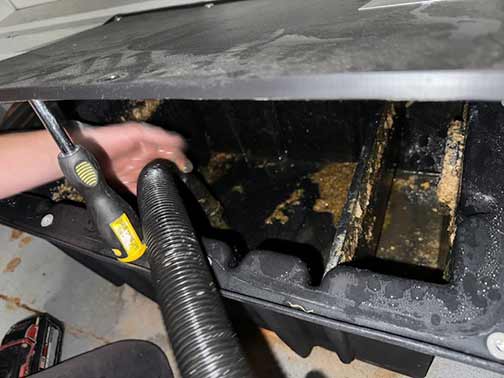
In the hustle and bustle of a restaurant, where culinary creativity meets operational efficiency, the plumbing system is a vital contributor. Among the numerous components of the plumbing system, one such important and often overlooked component is the grease trap. The importance of grease trap maintenance needs to be realized to prevent plumbing disasters that equate to huge business losses.
Grease traps are designed to intercept fats, oils, and grease (FOG) that would otherwise pass into the sewer. If left unchecked, these would solidify and accumulate, causing blockages that inhibit wastewater flow. Regular maintenance of grease traps ensures they operate at their best, prevents clogging, and keeps the restaurant’s plumbing system healthy.
The Catastrophic Consequences of Failing to Clean Grease Traps in Restaurants
Not cleaning grease traps can cause a myriad of operational and economic problems. The FOG accumulation in the plumbing system leads to slow drains, unpleasant odors, and, in severe cases, complete blockages. These not only frustrate the day-to-day running of the restaurant but also jeopardize customer satisfaction and health codes.
Financially, emergency plumbing and potential fines for non-compliance with health codes are expensive. Downtime, which contributes to financial impact, is also experienced by restaurants. Proper cleaning of grease traps on a routine basis is a proactive measure that can prevent these risks, going on to operate smoothly and within health code compliance.
Best Practices for Effective Grease Trap Maintenance in Restaurants
Maintenance best practices for grease traps are essential for safeguarding the restaurant plumbing system. First and foremost, a cleaning schedule is most important. Based on restaurant size and FOG volume produced, grease traps should be cleaned at least once a month.
In addition, staff training is essential. The staff ought to be trained on the necessity of minimizing FOG disposal down the drains and be motivated to pour oil and grease into a specific container. Proper waste management practices can go a long way in decreasing the burden on the grease trap, its efficiency, and lifespan.

The Imperative Role Played by Professional Grease Trap Services in Restaurants
Although some restaurants can go for DIY grease trap cleaning, the importance of professional services cannot be overemphasized. Professional grease trap service companies have the expertise and specialized tools that guarantee effective cleaning and maintenance. They are able to detect any potential problems in advance, saving money on repairs and guaranteeing compliance with local authority rules.
A relationship with a professional grease trap cleaning service company also offers peace of mind. They possess the expertise and experience to offer tailored maintenance schedules according to the restaurant’s specific needs, optimize the plumbing system’s performance, and reduce the risk of plumbing disasters.
Innovations in Grease Trap Technology for Restaurants
Grease trap technology continues to evolve, coming up with new and creative methods of improving efficiency and environmental friendliness. New grease traps have mechanisms that allow for the easy separation of FOG from wastewater, reducing the necessity for constant cleaning and environmental disruption.
There are also some newer grease traps that include sensors for monitoring FOG levels and alerting restaurant owners when cleaning is necessary. These kinds of technological advancements not only increase efficiency in terms of maintenance but also assist in promoting more sustainable waste management in restaurants.
The Environmental Impact and Sustainability of Grease Trap Maintenance in Restaurants
Grease trap maintenance is not only vital in preventing plumbing disasters, but it also plays a significant role in environmental sustainability. Properly maintained grease traps prevent FOG from entering the sewer system, where it can contribute to pollution and harm aquatic life.
By adopting sustainability in grease trap maintenance, restaurants can reduce their footprint on the environment. This includes recycling the recovered grease and oil, which can be used to make biodiesel or other useful products. Sustainability not only benefits the environment but also enhances the reputation of the restaurant in the eyes of environmentally aware diners.
Conclusion: Ensuring the Longevity of Your Restaurant’s Plumbing System through Grease Trap Maintenance
To sum it up, avoiding plumbing catastrophes in restaurants is dependent on routine grease trap servicing. Through the knowledge of the necessity of grease trap cleaning, adherence to best practices, and the utilization of professional services and emerging technologies, restaurant operators can protect their plumbing and steer clear of financial losses.
Prioritizing grease trap maintenance is a proactive strategy that ensures smooth operations, compliance with health codes, and environmental sustainability. As the restaurant industry continues to evolve, implementing these practices will be paramount to maintaining plumbing health and success in the long run.

